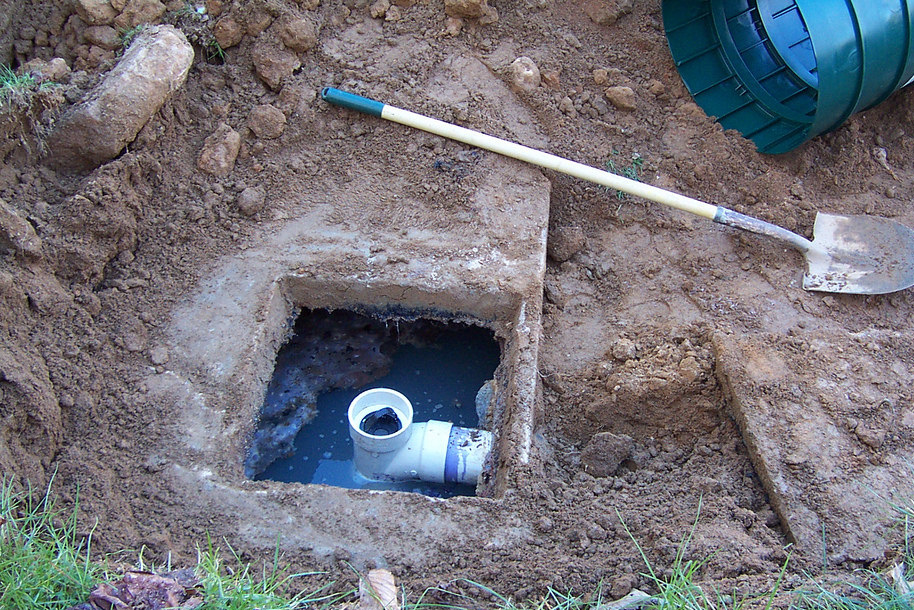Septic tanks play an important role in wastewater management especially for homes that are not connected to municipal sewers. Owners of properties have two choices for selecting the appropriate septic tanks which are precast or concrete. Both of them have unique advantages as well as considerations. Understanding the differences between these two can help property owners make well-informed decisions about sustainable water management.
Septic tanks, often referred to as underground chambers, are used to collect to process, disperse, and dispose of the wastewater of residential and commercial properties. They are a vital part of the wastewater treatment process, allowing for the safe treatment of wastewater while safeguarding the environment and health of the population.

Concrete vs. precast septic tanks: Which is better for you?
Concrete septic tanks have always been a favorite choice because of their durability and long-lasting. They are constructed on-site with poured concrete the tanks are renowned for their strength and the ability to withstand the test of time. But, the process of installation for concrete tanks is lengthy and laborious.
In contrast, precast septic tanks can be constructed off-site and transported to the property ready for installation. These tanks are manufactured in controlled conditions to guarantee the same quality and strength. Precast tanks are less difficult to install and have lower labor costs.
If property owners are considering an upgrade or replacement of their existing septic tanks, precast options provide a number of benefits. The controlled manufacturing process assures that the tanks are constructed to meet strict standard of quality, offering peace of mind to property owners. Installation is also a quick and effective process that decreases the time needed to complete the project.
How do you maintain your concrete septic tanks to ensure long-term durability
Concrete septic tanks are durable, but they require regular maintenance to keep their effectiveness. Regular inspection and pumping is essential to avoid issues like clogging or structural damages. To avoid the damage to the septic tank, property owners must be aware of the chemicals and materials that they introduce into the system.
Precast septic tanks are designed using environmental concerns in mind. They are constructed with sustainable methods, which reduce the amount of energy and waste that is produced. Additionally, the endurance and longevity of precast tanks contribute to less environmental impact throughout the course of their lifespan.
If they are considering installing a septic tank property owners must consider their specific needs and property features. Factors such as soil type property size, soil type, and local laws can affect the choice between concrete tanks and precast tanks. A consultation with experienced experts will help property owners make informed decisions based on their individual requirements.
The role of septic Tanks in Sustainable Wastewater Management
Septic tanks play an essential role in the sustainable treatment of wastewater, providing an effective means of treating and disposing of household effluent. Properly maintained septic systems contribute to the protection of groundwater as well as surface water, while preserving the ecological integrity of local ecosystems.
The right size septic tank is crucial to ensure effective wastewater treatment and avoid overloaded systems. The size of your property as well as the amount of water consumed and the number of residents must all be considered when selecting the tank size. An appropriate size is vital to the efficient treatment and treatment of waste.
Precast septic systems are manufactured by using advanced processes to create high-quality and reliable solutions for wastewater treatment. These tanks have been developed to be in compliance with strict standards of the industry. They give property owners an easy-to-maintain option for wastewater treatment.
Regular maintenance is crucial for the septic tank system to operate optimally and last as long as is possible. Property owners should adhere to recommended maintenance routines. This includes inspections and monitoring as well as pumping. By prioritizing maintenance, property owners will avoid costly repairs and ensure the continued operation of their septic tank system.
The layout of a septic tank is a crucial aspect of sustainable wastewater management. The system must be designed for the particular needs of the property, whether it is precast or concrete. Also, it must ensure that wastewater is treated and efficiently disposed. Professional design and installation assistance can assist property owners to design effective and reliable system for septic tanks. See more at Precast septic tanks near me
The Economic and Environmental Impact of Upgrading to a Precast Septic Tank System
Upgrades to precast septic tanks can be beneficial for the environment as well as homeowners. The shorter installation time and the associated labor costs of precast tanks can translate into costs savings for property owners. The environmental benefits of precast tank can also help in sustainable management of wastewater.
It is crucial to remember that selecting the ideal septic tank for your home can be a significant choice. If you decide to go with concrete or precast property owners need to consider the durability of the system, its efficiency in the long run, maintenance over time, and the environmental impact. Making educated decisions can allow property owners to be sure of the efficiency of their septic system as well as durability for many years.